
SkinDoc: Explainable AI for teledermatology
| Health & Medicine | Data Management & Analysis | Image Recognition & Understanding | Smart Data & Knowledge Services | Kaiserslautern
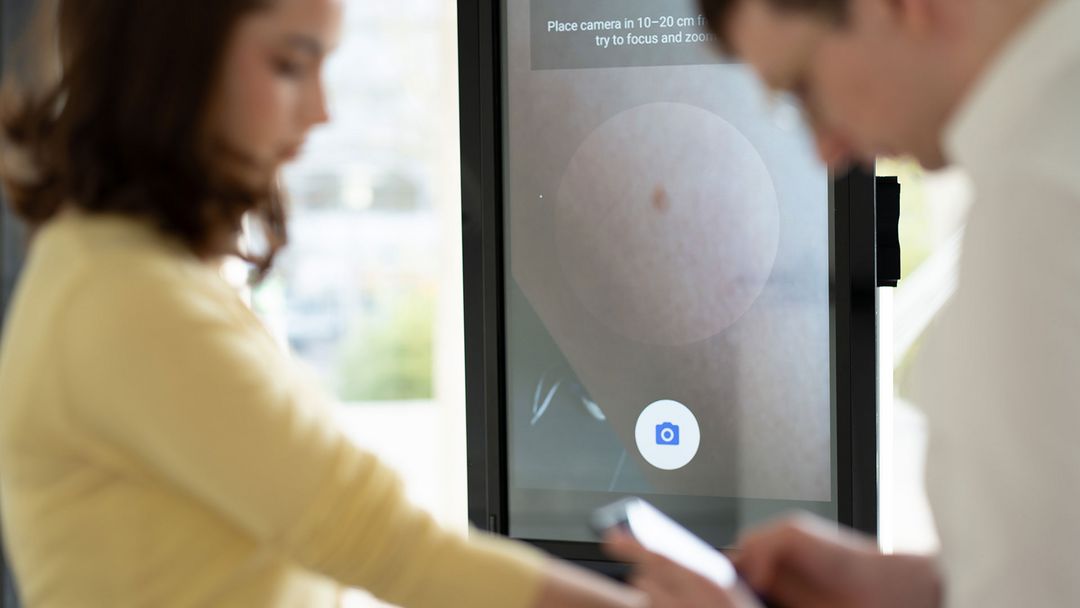
Early detection of potential abnormalities plays a crucial role in the prevention and successful treatment of skin diseases. SkinDoc was developed at DFKI in the research department Smart Data & Knowledge Services to provide an AI-supported teledermatology solution that makes medical pre-evaluation simple, safe, and transparent. From taking pictures of patients, to AI-supported diagnosis and decision explanation of the skin lesion, to the final diagnosis by a doctor, SkinDoc presents the entire process in a plausible and comprehensible way using explainable methods.
Only freely available clinical images of skin lesions were used to train SkinDoc. These were cured by experts in a partially automated process before training.
Using the cured data, the AI was optimised to solve the problem in several runs and using different training parameters. In addition to the actual training of the AI, various explanatory methods were subsequently trained and implemented to verify the decision-making processes of the trained AI model during use.
From image capture to diagnosis: the technology behind SkinDoc
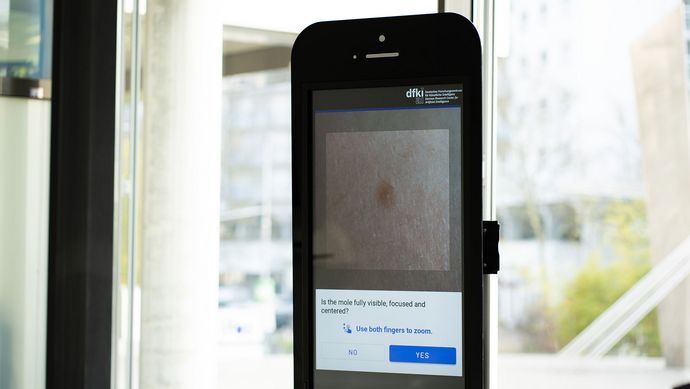
Step 1: Quality control of image recording
The first step in the AI analysis is to validate the quality of the recording. This involves an automated check to ensure that the recording of the patients presents an appropriate context, i.e. a ‘pure’ skin region with the lesion as centred as possible.
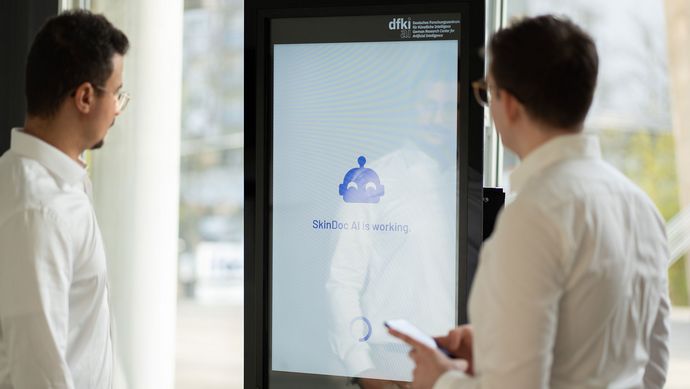
Step 2: AI pattern recognition for preliminary diagnosis
SkinDoc's diagnosis is based on the latest AI pattern recognition. The AI model was trained using an extensive image database carefully annotated by experts. This has enabled the AI to learn to recognise important patterns and structures and to compare new images with its database. This is how it provides a reliable preliminary diagnosis. However, it can only identify known patterns and cannot classify completely new features.
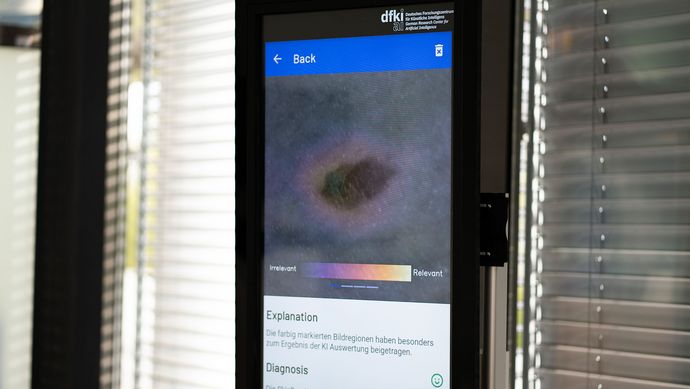
Step 3: Heat maps as a visual basis for decision-making
The AI also generates a so-called heat map, which assesses the image sections according to relevance and displays them on a scale from ‘irrelevant’ to ‘very relevant’. This heat map shows which areas were crucial for the diagnosis.
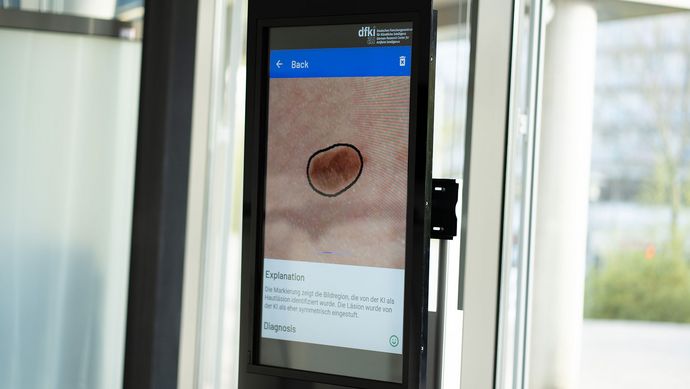
Step 4: Symmetry analysis and segmentation of skin features
Another analysis process examines the symmetry of the feature in question. Asymmetries are often an indication of certain skin changes and are weighted accordingly by the AI. The AI then segments the skin feature, i.e. it differentiates and classifies the skin lesion from the surrounding normal skin. This process ensures that the AI is able to correctly ‘separate’ the actual skin lesion from the surrounding skin.
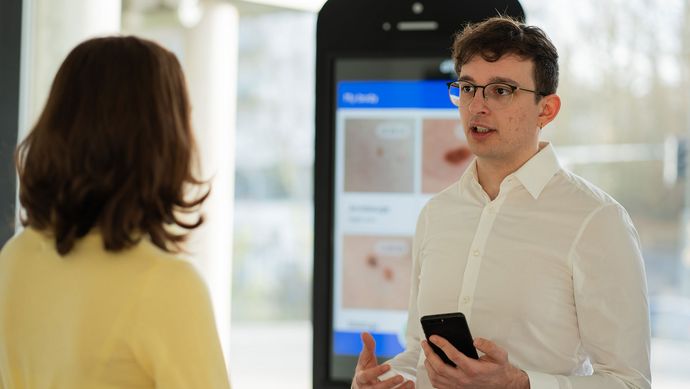
Step 5: Presentation of results and explainability of the AI
After the analysis is complete, the user receives the diagnostic assessment of the AI as well as an explanation of the analysis methods used. This step also creates an opportunity to obtain direct feedback from medical professionals.
After the analysis is complete, the user receives the diagnostic assessment of the AI as well as an explanation of the analysis methods used. This step also creates an opportunity to obtain direct feedback from medical professionals.
Trustworthy AI for medicine: How SkinDoc sets standards
As a trustworthy AI system (Trusted AI), SkinDoc is setting a new standard for AI solutions in high-risk areas by implementing various explanation methods. The medical field is predestined for the establishment of standards for Trusted AI because it places the strictest demands on security, reliability and ethical responsibility due to strict regulatory requirements, the high sensitivity of data and the direct influence on human well-being. The imperative need for medical decisions supported or initiated by AI systems to be transparent and comprehensible makes explainability and robustness indispensable features of trustworthy solutions.
SkinDoc in focus: explainable AI in the new IQZ-Berlin
The SkinDoc demonstrator will be on permanent display and can be experienced by the public from 28 January 2025 in the newly opened IQZ-Berlin of MISSION KI, on the premises of the German Museum of Technology. The research prototype has been in development since 2020.
MISSION KI
The MISSION KI initiative of the Federal Ministry for Digital and Transport (BMDV) aims to promote trust in artificial intelligence by introducing quality standards and testing procedures. This should lead to sustainable acceptance of AI as a key technology in business and society. DFKI is taking up these efforts as a partner in the initiative and is actively contributing to the development of practical approaches for the evaluation and safe application of AI.
Downloads
Here you can download the new issue of DFKI's AI magazine dfki.ai next (PDF).
Contact:
Adriano Lucieri, M.Sc.
- Adriano.Lucieri@dfki.de
- Phone: +49 631 20575 5361

